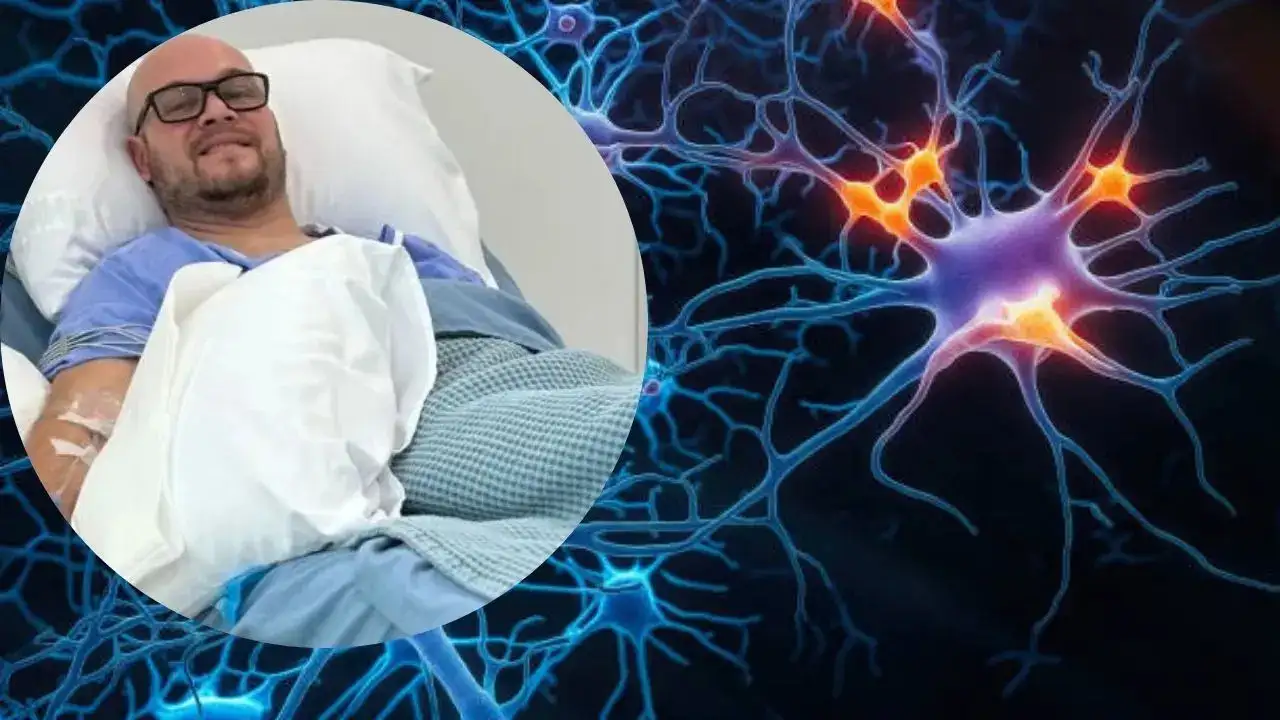
ALS is characterized by the degeneration of both upper and lower motor neurons, leading to muscle weakness, atrophy, and eventually paralysis
Forty-one-year-old Andres Albaladejo noticed a bizarre symptom in his left arm, which he ignored, thinking it was nothing more than a usual nerve issue. However, little did he know that it was the first sign of amyotrophic lateral sclerosis, or ALS, which gives him just two to three years to live. A former schoolteacher, Andres from Florida in the United States, was diagnosed with the neurodegenerative condition – also known as Lou Gehrig's disease – a progressive disease that affects nerve cells in your brain and spinal cord, causing the loss of muscle control. According to doctors, ALS is characterised by the degeneration of both upper and lower motor neurons, leading to muscle weakness, atrophy, and eventually paralysis.
"I was heartbroken when I heard the news, like my life was being taken from me piece by piece – I still have so much of me to give. I'm angry that I won't be here to see my little girl grow into the smart, kind, and beautiful woman I know she will be. I think that hurts the most,” he said.
Andre said his condition began with symptoms like twitching in his left arm, and even though he could feel it all the time, he did not take it seriously. "We thought it was a pinched nerve, but over time, I started experiencing arm weakness and wasn't able to grip with my left arm,” Andre added.
However, when the symptoms kept on increasing, Andre visited the chiropractor, and an X-ray confirmed he had a trapped nerve, for which he began treatment. But even after months when the arm weakness did not go away, Andres was sent to a neurologist. The neurologist performed three EMGs – a medical test that measures the electrical activity in muscles – and referred Andres to an ALS clinic.
Andre was given a prognosis for ALS, the condition which Stephen Hawking had, with just two to five years of living. At present, there are no FDA-approved stem cell therapies for ALS available in the US, but there are several trials to investigate the safety and efficacy of using stem cells to potentially slow or halt the progression.
What is ALS?
ALS targets the nerve cells or neurons in your brain and spinal cord, affecting your muscle control. According to doctors, you may notice muscle weakness and muscle twitching that affect your ability to walk independently, reach for objects, chew food, and talk.
Doctors say ALS causes your muscles to waste away, eventually making it harder to breathe and may lead to life-threatening outcomes. Even though there is no cure, treatments are constantly improving, and according to doctors, the right combination can even slow the progression of the disease and improve your quality of life.
Signs and symptoms of ALS
A few signs and symptoms of amyotrophic lateral sclerosis include:
- Muscle weakness in your arms, legs, and neck
- Muscle cramps
- Twitching in hands, feet, and shoulders
- Muscle stiffness causing spasticity
- Speech challenges like slurring, trouble forming words
- Drooling
- Unintentional emotional expressions
-
Fatigue and tiredness
- Trouble swallowing
As symptoms get more severe, you may have trouble breathing, standing, or walking. You might experience significant weight loss. Contact your healthcare provider if symptoms worsen and seek emergency care if you’re having trouble breathing.
What causes ALS?
Doctors say they do not know what causes ALS, but they believe it is a combination of the following factors:
Genetics
More than 70 per cent of familial cases and 5-10 per cent of sporadic cases involve genetic changes. They’re most often in the C9orf72, SOD1, TARDBP, and FUS genes. There are more than 40 related genes.
Environment
Exposure to toxins like lead and mercury, viruses, or trauma may also play a role.
What researchers do know is that the disease targets motor neurons. These regulate your voluntary movements, like talking, chewing, moving your limbs, and breathing.
